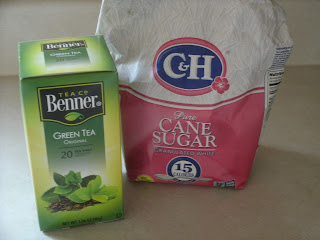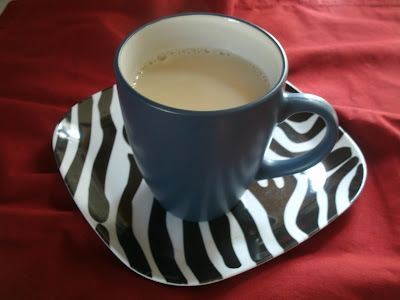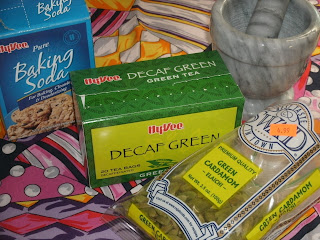A tea I will never try
Exploring South America has yielded a surprise. A type of tea that I will never try. Why won't I try it? Well, obtaining the ingredients to make it would be illegal, at least where I live. I found some countries that made tea from dried cocoa leaves. One of the videos did address that this tea does contain a very small amount of cocaine. They said it wasn't enough to get high off the tea, but it would trigger a positive drug test.
The interesting thing is when I googled cacao leaves to find a picture (I don't even know what cocoa leaves or plants look like), I found advertisements to buy cacao leaves, even cacao leaf tea on Amazon. I was suspicious. After all, there is another type of tea called kava that is made from a root that makes a mildly narcotic brew. While there are many teas in the states that are labeled "kava" tea, they don't contain any of that root, and it is apparently a fashionable name applied to teas that are a jumble of herbs mixed together. I clicked on one of the "cocoa leaf" teas listed on Amazon, and found that it was made from the shells of the cocoa bean. This is definitely another "kava" tea situation. Stock photos of cocoa plants tend to focus on the large pods that contain the cocoa "beans".
I tried to find some alternatives for these countries, but this is the only reference to tea I could find for Colombia, Venezuela, and Bolivia.
I used to work with a woman from Colombia. She came to the states as a teenager, and was very upset about having to learn English. I remember her story about how her father finally broke her refusal to learn a new language. After a year, her father took the family to a 5 star restaurant, and told the family they could have anything they wanted off the menu - as long as they ordered in English. The only thing she could say in English was burger and fries, so that's what she ate while watching the rest of her family eat something better. I can't say that I know a lot about her home country, other than it is on the coast of South America, and they speak Spanish there. The country was actually named for Christopher Columbus, and it forms the southern border for Panama.
When I was a child, I knew a couple who had a child stationed at a military base in Venezuela, so I always think of them when that country is mentioned. I vaguely remember being shown a picture of the house they lived in there. It looked tropical, and I think they had a satellite dish. When I was a kid, only rich people had those. It makes sense that they would have the same tea as Colombia since these countries are neighbors at the top of the South American continent.
Bolivia is further south, in in the west central part of the continent. While 1/3 of the country is covered by the Andes mountains, the majority of the cities and industries are in the highlands. While the country lies in the tropics, they have great variation in temperature thanks to the mountains. Like the rest of the Andes mountains, Bolivia is home to the currently popular llama, along with chinchillas, and guinea pigs. Lake Titicaca on the boarder of Peru and Bolivia is host to one of my favorite birds, flamingoes. Like so much of the region, they have a long history of native populations exploited by the Spanish conquistadors, and the lasting legacy of that system. In 1953, the Agrarian Reform Act broke up large farming estates, and gave plots of land back to the Indian population. While there was some initial confusion over the act, and the rapidity of change, it sounds like the reform really revitalized the region, and many peoples' lives were improved.
The interesting thing is when I googled cacao leaves to find a picture (I don't even know what cocoa leaves or plants look like), I found advertisements to buy cacao leaves, even cacao leaf tea on Amazon. I was suspicious. After all, there is another type of tea called kava that is made from a root that makes a mildly narcotic brew. While there are many teas in the states that are labeled "kava" tea, they don't contain any of that root, and it is apparently a fashionable name applied to teas that are a jumble of herbs mixed together. I clicked on one of the "cocoa leaf" teas listed on Amazon, and found that it was made from the shells of the cocoa bean. This is definitely another "kava" tea situation. Stock photos of cocoa plants tend to focus on the large pods that contain the cocoa "beans".
I tried to find some alternatives for these countries, but this is the only reference to tea I could find for Colombia, Venezuela, and Bolivia.
I used to work with a woman from Colombia. She came to the states as a teenager, and was very upset about having to learn English. I remember her story about how her father finally broke her refusal to learn a new language. After a year, her father took the family to a 5 star restaurant, and told the family they could have anything they wanted off the menu - as long as they ordered in English. The only thing she could say in English was burger and fries, so that's what she ate while watching the rest of her family eat something better. I can't say that I know a lot about her home country, other than it is on the coast of South America, and they speak Spanish there. The country was actually named for Christopher Columbus, and it forms the southern border for Panama.
When I was a child, I knew a couple who had a child stationed at a military base in Venezuela, so I always think of them when that country is mentioned. I vaguely remember being shown a picture of the house they lived in there. It looked tropical, and I think they had a satellite dish. When I was a kid, only rich people had those. It makes sense that they would have the same tea as Colombia since these countries are neighbors at the top of the South American continent.
Bolivia is further south, in in the west central part of the continent. While 1/3 of the country is covered by the Andes mountains, the majority of the cities and industries are in the highlands. While the country lies in the tropics, they have great variation in temperature thanks to the mountains. Like the rest of the Andes mountains, Bolivia is home to the currently popular llama, along with chinchillas, and guinea pigs. Lake Titicaca on the boarder of Peru and Bolivia is host to one of my favorite birds, flamingoes. Like so much of the region, they have a long history of native populations exploited by the Spanish conquistadors, and the lasting legacy of that system. In 1953, the Agrarian Reform Act broke up large farming estates, and gave plots of land back to the Indian population. While there was some initial confusion over the act, and the rapidity of change, it sounds like the reform really revitalized the region, and many peoples' lives were improved.
 |
| The moon, sometime in the spring. |



Well, at least there's one tea neither one of us will try.
ReplyDeleteMaybe even more than one...
Delete